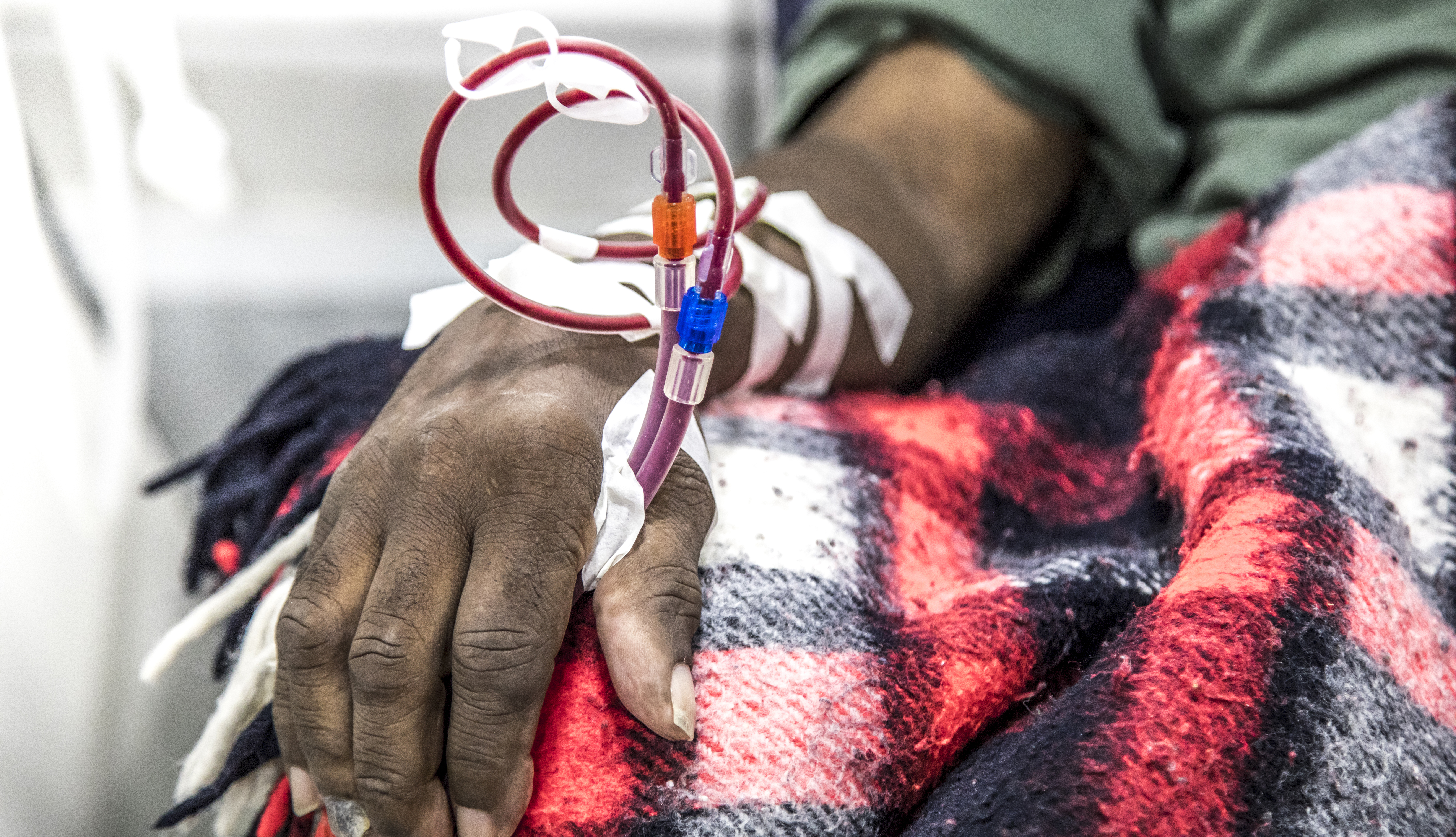
Black, hispanic dialysis patients at higher risk of bloodstream infections
- Select a language for the TTS:
- UK English Female
- UK English Male
- US English Female
- US English Male
- Australian Female
- Australian Male
- Language selected: (auto detect) - EN
Play all audios:

Adults with kidney failure in the United States who receive dialysis to treat it are 100 times more likely to have a staph bloodstream infection than those not on dialysis, according to a
new report from the Centers for Disease Control and Prevention (CDC). And Black and Hispanic adults are at greater risk for these potentially deadly infections than their white peers, the
study found. Dialysis, a common treatment for end-stage kidney disease, removes waste products and fluid from the blood once the kidneys no longer can. More than 800,000 people in the U.S.
have end-stage kidney disease, and roughly 70 percent of them are on dialysis, said CDC Chief Medical Officer Debra Houry, M.D. In fact, every 24 hours, 360 people begin dialysis treatment
for kidney failure, the CDC notes. The lifesaving treatment is not without risks, however. Needles and catheters are used to connect patients to a machine that cleans toxins from the blood
and returns it to the patient. But germs, including staphylococcus, can enter the bloodstream through these access points. “These infections can be serious or deadly, and some are resistant
to some of the most common antibiotics used to treat them,” Houry said during a Feb. 6 news briefing. The CDC analysis looked at data from 2017 to 2020 and found that the rate of staph
bloodstream infections before accounting for various factors was 4,751 for every 100,000 non-Hispanic Black patients who received dialysis in a year and 4,500 for every 100,000 Hispanic
patients. The unadjusted rate of infections for white dialysis patients was 3,866 per 100,000. About 1 in 3 people receiving dialysis in the U.S. are Black and 1 in 5 are Hispanic, according
to the CDC. SYMPTOMS OF A BLOODSTREAM INFECTION Nearly 20,000 people died with bloodstream staph infections in 2017. Know the warning signs: * Fever * Chills * Low blood pressure _Source:
CDC_ Infections were also more common among people who lived in areas with higher poverty, more household crowding, and lower education, according to the report. Forty-two percent of staph
bloodstream infections from dialysis occurred in areas with the highest poverty levels, versus 10 percent in areas with the lowest poverty levels, said Shannon Novosad, M.D., an author on
the study and the dialysis safety team lead in the CDC’s Division of Healthcare Quality Promotion. How patients received dialysis made a big difference in infection risk. For example, those
who received dialysis through a central venous catheter — a tube inserted directly into a vein, typically in the neck, chest or groin — had a staph infection risk six times higher than those
who received dialysis through a fistula, which requires a surgical procedure to connect an artery and a vein, often in the forearm. WHAT CAN DIALYSIS PATIENTS DO? Encouragingly, staph
bloodstream infections from dialysis have declined in recent years. Still, health experts say more can be done to bring numbers even lower. One key way is to reduce the use of central venous
catheters for dialysis treatment, Novosad said. Patients can play a role in this step by asking their health care provider “if the type of access that they have for dialysis is the safest
or best access for them,” says Ivan Porter, M.D., a nephrologist with Mayo Clinic in Jacksonville, Florida.
